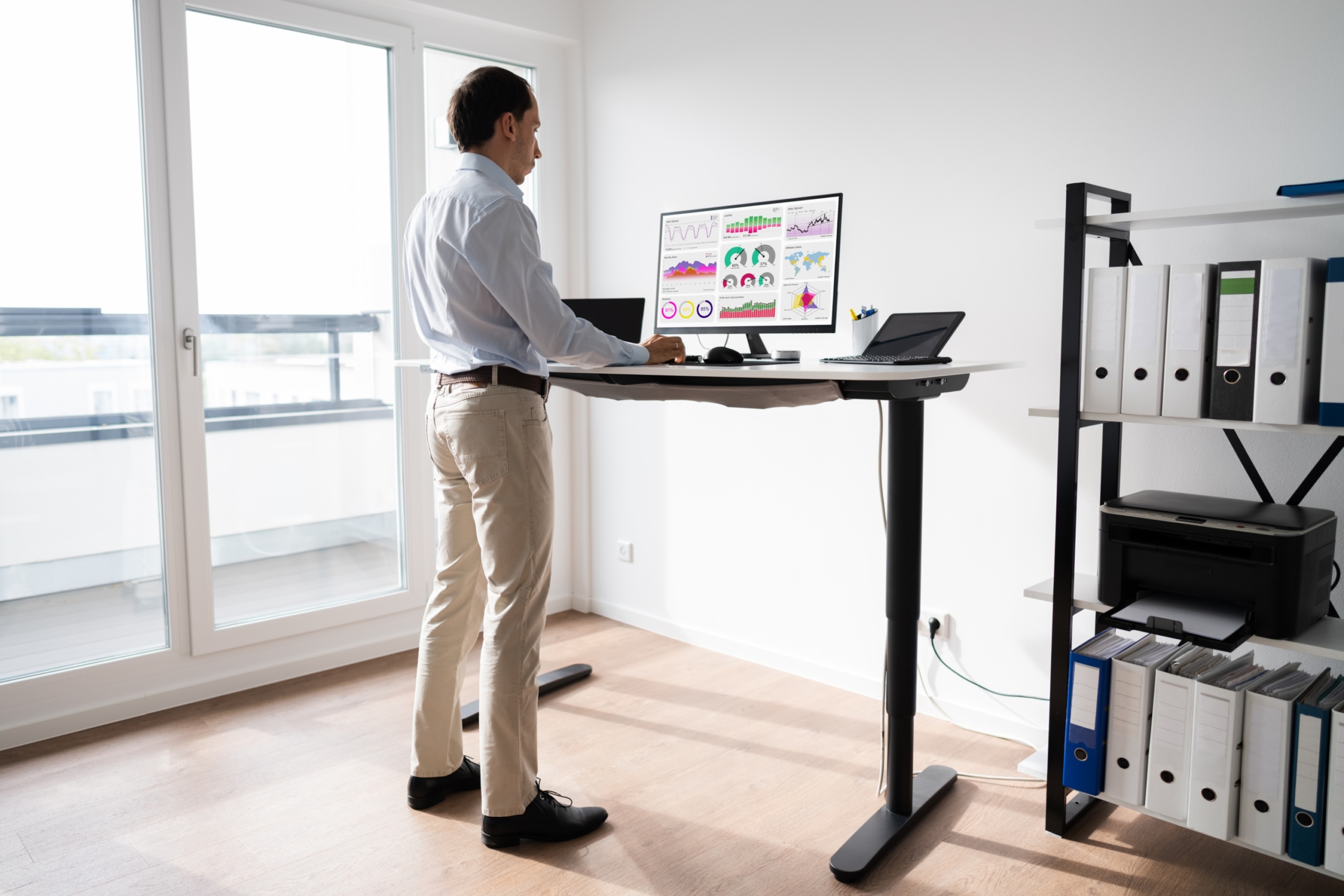The world has certainly shifted over the past year, and many people are finding themselves working from home. While this change certainly has its ups and downs, there is another great threat to our health many haven’t considered: sitting.
While this is not a new phenomenon for many office workers, for others, being stationary all day is new. Regardless of whether you’re used to sitting 9 to 5 or not, too much sitting can be dangerous for your health.

Effects of sitting too long at work
While it may not seem like it, it is possible to sit yourself to death. That sounds dramatic, but unfortunately, many studies have proven that too much sitting can lead to many fatal health problems.
Increased chance of heart disease
Harvard published a study on the effects of sitting in correlation to heart disease. The research concluded that sitting reduced a person’s metabolism and affected the body’s natural processes for converting sugars and fat to energy. The low metabolic rate for these processes can increase a person’s chance of heart disease and diabetes.
Diabetes
After many surveys of people with Type-2 Diabetes, Dutch researchers found that people who sat for more than thirty minutes to an hour at a time were more prone to this disease.
Cancer
Too much sitting can also increase your risk of colon cancer and endometrial cancer. A person’s chance of obtaining cancer from excessive sitting increases up to sixty percent when compared to more physically active folks.
Varicose veins
Sitting does not require much use of the muscles and veins in your legs, so over time, varicose veins can become evident in a person’s ankles and legs. While varicose veins aren’t a serious illness on their own, they can lead to many other problems down the road.
Think you might have varicose veins? Look for swollen, twisting veins that might cause pain or discomfort.
Symptoms of sitting down too much
You don’t need to work a day-long office job to feel the effects of excessive sitting. People who are on their feet all day are also prone to the ill effects of too much sitting if they spend their downtime sitting for long periods of time. Below are some common symptoms to look out for that may be a sign to stand up and stretch.
Headaches
If you experience headaches more frequently than normal, this may be a sign of too much sitting. Blood flows more effectively in a standing or moving body, so when sitting for too long, your blood pressure lowers and you may experience more lightheadedness and frequent headaches. Further, bad posture can also contribute to headaches, especially at the back of your head.
Fatigue/Lack of Sleep
Interestingly enough, too much sitting is not as relaxing as you think. It can ultimately cause fatigue and lack of sleep. This may also be the effect of spending too much time looking at a screen, as when we sit we’re often staring at a computer, phone, or television. If you are experiencing irregular sleep patterns, you might consider putting more movement into your daily routine and reducing screen time as much as possible.
Indigestion
Similar to how the risk of colon cancer and endometrial cancer increase as you sit too much, you may experience more indigestion from the lack of movement. Your body naturally needs you to move for it to use energy and burn calories. By sitting for long periods of time, you prevent your body from triggering these processes and may find yourself struggling with indigestion as a result.
Backaches
Often, backaches are a direct result of poor posture. If left untreated or ignored, those mild backaches could turn into more serious problems that will require a chiropractor or specialist to treat. If your lifestyle requires you to stay stationary, consider a standing desk or ergonomic chair that promotes good posture and back strength.

How to be more active at your desk
While many of the symptoms and effects of too much sitting can be startling and worrisome, you can begin resolving the issue by implementing more movement into your daily routine.
Try to stand every fifteen minutes
A simple way to prevent prolonged sitting is to set an alarm that encourages you to stand every fifteen minutes. So, in an eight hour workday, try to stand a total of thirty-two times. Doctors recommend that you stand for about five to ten minutes during each break to achieve the best results.
Make a reason to get up and walk across the room
If you’re struggling to meet your standing goal each day, try to find reasons to get up and move. Many offices have started to take this into consideration in the workplace and opt for an office set up that encourages movement. For example, an office manager may move the printer down the hall and away from employee desks, encouraging people to get up from the desk and walk down the hall for their paperwork.
Similarly, you can give yourself tasks to do to encourage you to move away from the desk. At home, you might keep your office as far away from the kitchen as possible so that during break time, you are pushed to walk a greater distance for a snack or meal.
Try out these tips and tricks to find out what works for you and you’ll be well on your way to keeping your mind and body protected from too much sitting.



